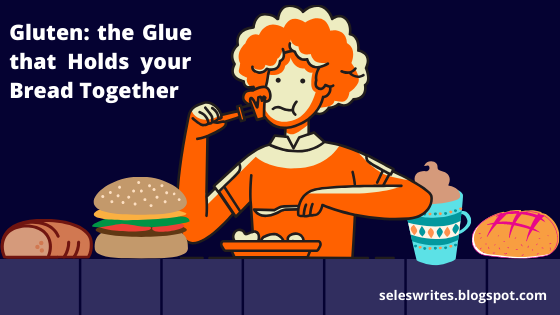An Introduction to Wheat Gluten: the Glue that holds your bread together
What is gluten? Gluten (a word derived from the Latin word ‘glue’) is the Fevicol of the food world. It is the thing that holds your roti, breakfast cereals, pasta and bio-plastics together. It is not present in flour but is produced during the formation of dough.
How does it develop?
There are two protein groups present in wheat flour- glutenins and gliadins. On
an ordinary day, they are like the Finance and Research & Development teams
in an office- may be working for the same company but won’t mingle with each
other if not necessary. But when thrown into the same room, [in this case, water]
and the boss applies the pressure, [in this case, kneading] these two fractions
have no option left but to come together to work. With the addition of water to
the flour, these two proteins together form elastic and a stretchy network
of proteins- called Gluten. The more your mix the flour with water, the more
gluten is developed.
Uses of Gluten
Bread: Gluten is a net that holds the bread dough and helps it to rise by trapping gas bubbles during fermentation. It also gives the bread its airy and chewy texture. Apart from this, wheat gluten is also used as an additive to fortify flours or an ingredient in bread recipes.
Mock Meat: In a few recent developments and studies, wheat gluten is being used to develop plant-based meat food for vegans and vegetarians. One of the examples is Seitan. It is a meat analogue, a substitute to duck meat, originated from China and is believed to be developed by monks. Hence, it is also sometimes called ‘monk duck’ (duck made by monks) or ‘mock duck’ (fake duck).
Value Addition: Gluten not only increases the protein content but also has the ability to bind fat and water. It is used as an ingredient in many meat, poultry, fish and protein-enriched food products like biscuits, breakfast cereals, sausages, meat patties and sports beverages. It is also used in pet food as a binder for re-formed meat and meat pieces, giving the meat chunks the strength to retain their shape during cooking.
Bio-plastics: To tackle environmental issues, people are now looking to replace conventional plastics with bio-plastics. According to Science Direct, bio-plastic is a plastic that is made partly or wholly from renewable biomass sources such as plants, vegetable oils and yeasts. And wheat gluten is one of the natural sources that have piqued the interest of scientists when it comes to developing a bio-plastic.
Sources:





Comments
Post a Comment